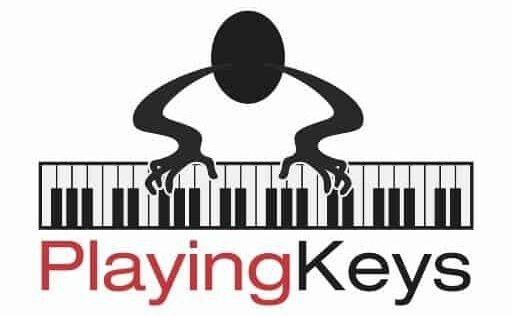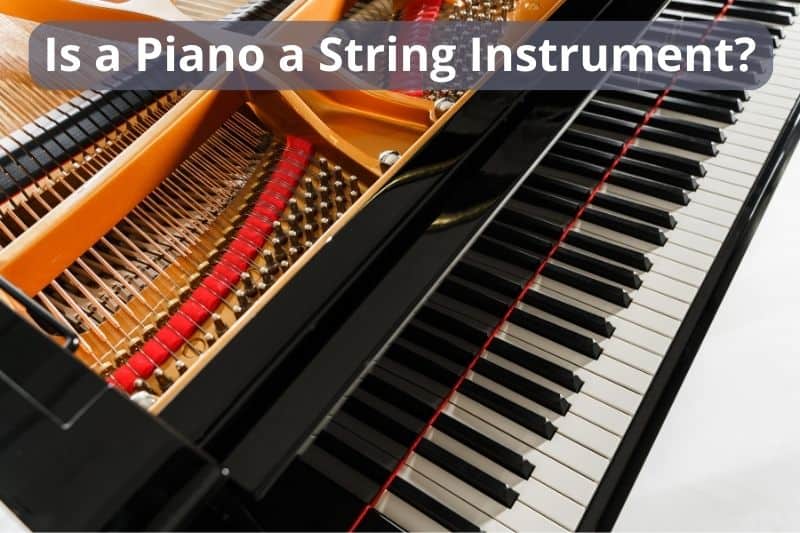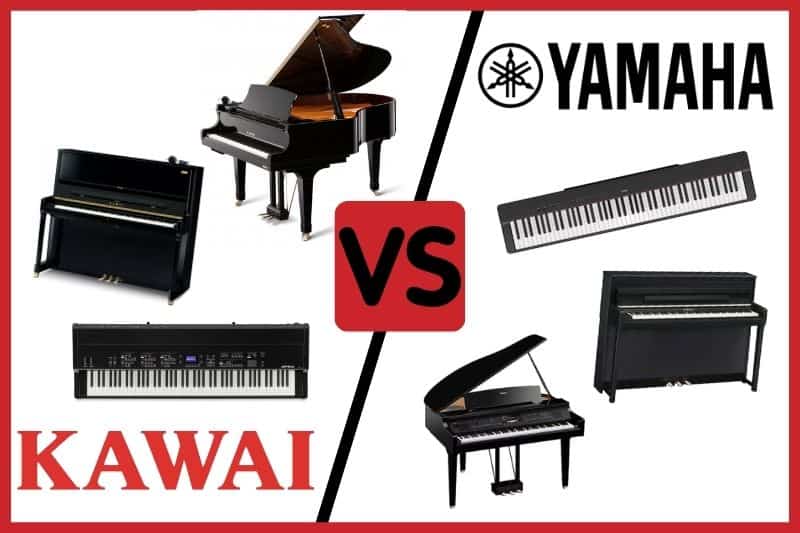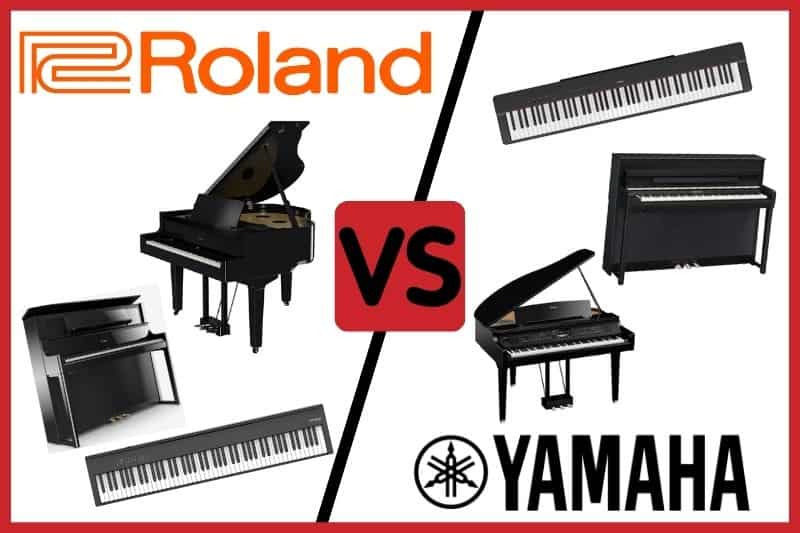While the piano and harpsichord are similar in appearance, there are several key differences that give each instrument its own personality and use.
| Piano | Harpsichord | |
| Sound Production | Striking (via hammers) | Plucking (via plectrum) |
| Origin | 18th Century | 12th Century |
| Technique and Handling | Dynamics and Sustain | Articulation and Tempo |
| Manufacturing | Larger keys and larger metal frame | Slimmer keys of wood rather than plastic/ivory; may have “reversed keys” |
| Octaves/Number of Keys | 7 ¼ octaves/88 keys | 5 octaves/60 keys |
| Character of Sound | Sonorous and romantic | Formal and precise |
| Dynamics/Volume | Pianoforte | N/A |
| Tuning | Annually | 2 weeks – 2 months |
| Symbolism | More mainstream design; Grand/Baby Grand sign of affluence | Aristocratic (art as well as an instrument) |
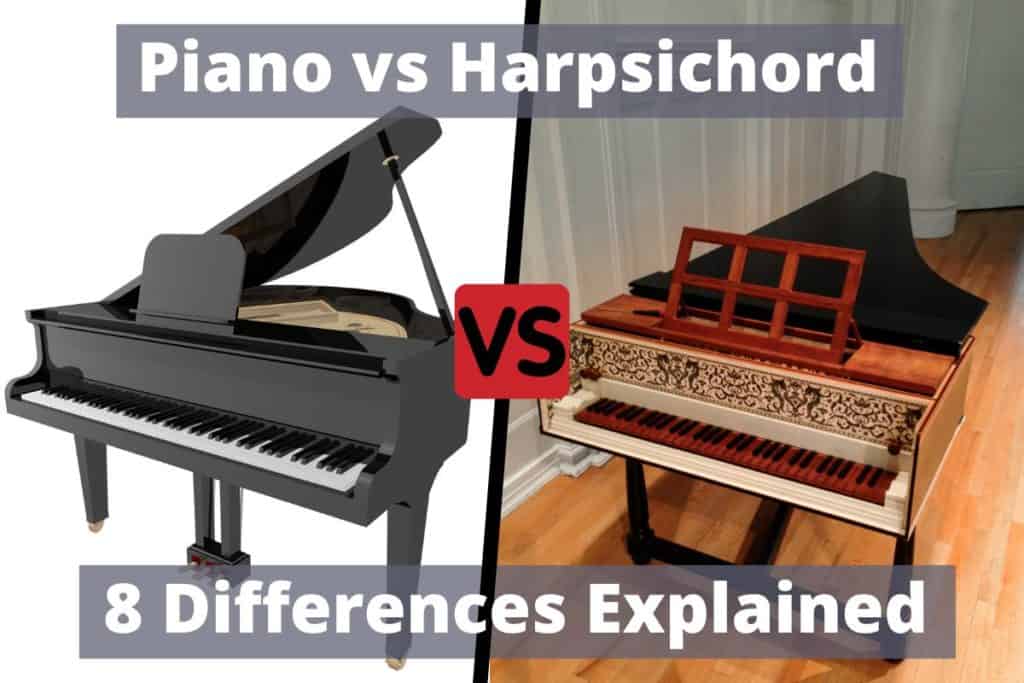
Piano vs. Harpsichord: Sound Production
The main difference between a piano and a harpsichord is how they create sound. This sets the stage for many other differences, including the best techniques and what type of sound to expect.
Both are considered percussion instruments or chordophones because they rely on striking (piano) or plucking (harpsichord) of strings.
When you press the key on a piano, it causes a hammer to strike the strings from below. The string then vibrates, transmitting the sound to the soundboard through the bridge, and the soundboard vibrates the air to create a full, resonating sound.
The hammer action of a piano allows for more variation in how the instrument is played, including deepening dynamics or depth of sound.
A harpsichord, which is often longer and more narrow than a piano, uses plucking to create sound. When you press a key, it causes a small piece of metal (or plastic) called a plectrum to raise on the other end, plucking the appropriate string.
The more straightforward design of the harpsichord restricts any variation in volume.
Piano vs. Harpsichord: Origin and History
The harpsichord appeared several centuries before the piano, and it actually inspired the invention of the piano. The harpsichord has a long and diverse history, but little is set in stone before the 16th century. The Baroque period was when the instrument underwent major transformations to rise to its power. Many Baroque composers either wrote for or played the harpsichord, including:
Jean-Philippe Rameau
Domenico Scarlatti
Johann Sebastian Bach
The piano is much more modern, and it wasn’t until the 18th century that Bartolomeo Cristofori moved to improve the rudimentary design of the harpsichord. This new “gravicembalo col piano, e forte” (harpsichord with soft and loud) included hammers and dampers, two keyboards, and a range of 4 octaves.
This name was eventually shortened to pianoforte, then piano, which references the dynamics offered by the new instrument. These early instruments weren’t much more advanced than a sophisticated harpsichord. Still, they quickly evolved past pinched sound and heavy touch requirements to win over Bach by the middle of the century.
By the 19th century, the piano became the sweeping force of the Romantic period of music and musicians like Beethoven, Chopin, and Liszt. The piano’s ability to highlight the depth of emotion and expression through dynamics helped it blend well with the rest of the orchestra. This allowed it to tell some of the most compelling musical stories that remain today.
Piano vs. Harpsichord: Technique and Handling
Johann Sebastian Bach was one of the first to note that the piano required a heavier hand to play, primarily due to how it creates sound. While this started off as an issue, mastering the muscles and muscle memory needed to play the piano is the trade-off necessary for the soft and supple sound it creates.
While accuracy is essential regardless of what instrument you’re playing, the techniques used to play the piano put greater focus on dynamics and sustain. These elements create a distinguished sound.
The harpsichord, which lacks the action necessary for dynamics or sustained notes, instead relies on articulation. Pieces written for the harpsichord understand how to utilize tempo to set the mood. The player must understand how to play pieces with precision to express the music.
Piano vs. Harpsichord: Manufacturing
When comparing the structure of a piano and a harpsichord, the body directly impacts how each instrument sounds.
Modern pianos (those post-1843) have a metal frame that allows them to make a larger sound. This furthered the piano’s ability to project in a concert hall and deepen dynamics.
The harpsichord is made entirely of wood, leading to an even smaller sound. Harpsichords are usually quiet enough to play in one room without bothering those next door.
Another key difference in manufacturing is the reversed key appearance of many harpsichords. You probably imagine a modern piano with white natural notes and black half steps, but the harpsichord represents the notes differently.
This was primarily due to the high cost and scarcity of the ivory used for white keys. It made more sense to manufacture most of the keys using ebony or rosewood and fill in the scarcer notes with ivory.
Pianos graduated out of this as they became more popular, likely because of the desire for contrast in the keys when playing.
Piano vs. Harpsichord: Octaves and Number of Keys
A piano has 88 keys that cover 7 ¼ octaves, ranging from A0 to C8. The harpsichord only has 60 keys to cover 5 octaves, ranging from F1 to F6. You may find harpsichords in 4 octaves or 6 octaves, but 5 is the most common.
The piano’s range encompasses the frequency range in which humans can best distinguish pitch. While we can hear 20 Hz to 20,000 Hz, our ability to distinguish pitch is between 50 Hz to 4,000 Hz. The lowest frequency of the piano is 27.5 Hz, while the highest frequency sits at 4,186.01 Hz.
Piano vs. Harpsichord: Sound and Dynamics
Differences in sound and dynamics come directly from how you play each instrument.
The piano not only relies on the notes you choose but how you choose to play them. Gentle, quick key presses will produce a much softer sound than boldly hammering away. The ability to control dynamics and tone through force and control sustain through pedals leads to a more emotional sound overall.
The harpsichord, which does not respond to force, produces the same tone regardless of how you play. Harpsichords are much quieter than pianos and rely on more articulate methods to create variety in sound.
Piano vs. Harpsichord: Tuning
Pianos stay in tune much better than a harpsichord, and you only need to tend the tuning every year or so.
The harpsichord, which has a much weaker tension, needs regular tuning. This usually sets in every 2 weeks to 2 months. Still, performers may find that they need to tune the instrument after every performance.
Piano vs. Harpsichord: Symbol of Status
The harpsichord has a history as an instrument for aristocrats, and it acts as much as a piece of art in the home as an instrument. You would find it in places of prominence to highlight sophistication, including palaces and churches, and it would have a design to match the elegance around it.
The piano has come a long way in deconstructing the idea that music is tied to status or station, and technology has done quite a bit to bring keyed instruments into the home.
Keyboards and digital pianos make learning and playing music much more accessible. However, the sheer cost of a grand piano or a baby grand still creates an atmosphere of affluence.
